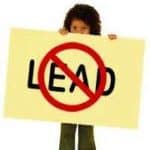Charles is a pleasant, married, middle-aged man that works in construction; who is hands on and supervises a small team. By all accounts, he feels well now, but when we first met he suffered from ongoing fatigue, unrelenting muscle pains that couldn’t be explained, poor memory recall, and abdominal pains. He had visited numerous specialists and had undergone a battery of tests including imaging without explanation for his symptoms. I didn’t see an obvious cause of his symptoms in reviewing his medical records. In many ways, Charles is typical of the type of patient who visits our practice. He possessed a strong will and motivation to return to health despite finding no solution through conventional routes.
After carefully considering his symptoms and his occupation in construction, I suggested Charles undergo screening for stored toxic heavy metals. He agreed and within two weeks we had results. Charles had abnormal elevations of several toxic metals but his lead levels led the charge. They were much higher than the reference range. His values heightened my suspicion that perhaps elevated levels of lead, along with the other metals was the cause of his complaints.
What is Lead?
As a naturally occurring heavy metal, lead is known to cause toxicity in the smallest amounts. The Environmental Protection Agency (EPA) reports that there is no safe level of lead. Lead especially has adverse effects on the neurological and cardiovascular system and is particularly toxic to infants and small children. Lead can be found buried deep within the earth’s crust but the fossil fuel industry decided to extract and add it to fuel. According to David Rosner, in the May 2016 issue of the journal Health Affairs, 5 million tons of lead were spewed around worldwide before being removed from gasoline in the mid-1970s.
Lead as a Cardiovascular Toxin.
Research in environmental toxicology and cardiovascular disease spanning over twenty years links lead exposure to heart disease, high blood pressure, and kidney disease. Some of the mechanisms behind lead’s negative cardiovascular effects include promoting inflammation in the cardiovascular system, damaging the function of the cells that line the cardiovascular system, enhancing signals that lead to arterial constriction and increasing oxidation.
Lead Toxicity in Children.
Children are particularly vulnerable to the effects of lead since they absorb greater amounts of it. Children under the age of six months and those in-utero are even more susceptible due to an underdeveloped blood brain barrier which filters toxins before they reach the brain. Early symptoms of lead toxicity in children include behavior problems, speech and hearing impediments, and learning disabilities. As toxicity worsens, muscle aches, abdominal pains, headaches, fatigue, lethargy, and vomiting occur. What’s most frightening is that lead can lead to irreversible decrements in IQ. Severe lead toxicity can cause seizures, paralysis, coma, and even death.
Where’s the Lead?
News reports of lead tainted municipal water pipes and soldering from Flint Michigan and New York to Los Angeles reveals that lead exposure and toxicity isn’t just a concern of the past. Many cities across the country harbor lead levels in tap water that exceed the Lead Action Level federal limits. This historically occurred in some northern California water utilities. Shooting ranges are major sources of lead exposure. Visitors of ranges are exposed to and carry lead dust on their clothes, shoes, and gear home to their families. Plumbers, electricians, gun range employees, miners, metal/steel workers, battery manufactures, construction, pottery/ceramics, auto mechanics, refinery workers are some occupations with the most significant lead exposures. Lead can be found in common household goods and products like lipstick and other cosmetics, vinyl products, children’s lunch pails, and chocolates. Candies, herbs and supplements, trinkets and costume jewelry from China are not uncommonly contaminated with lead as are some herbs from India.
Get Tested for Lead.
Since lead is toxic in any amount we should avoid all potential exposures. For those working in occupations at risk for lead exposure, all precautions should be taken to minimize exposure by observing all safely measures, using protective gear and not contaminating the home with work attire. Home goods possible contaminated with lead can be discarded and replaced with lead free items. Water filters certified to remove lead should be installed at the kitchen sink and on shower heads.
Anyone with known lead exposure, especially children, should immediately have their blood tested for lead levels. Anyone with symptoms suggestive of lead exposure and with diseases linked to lead exposure should consider testing for blood lead levels and testing for stored levels of lead. Screening for stored levels of heavy metals led to a reversal of debilitating and previously unexplained symptoms Charles had been experiencing and serves as an example of why patients and doctors should be alert of the possibility of lead toxicity as a source of illness.



